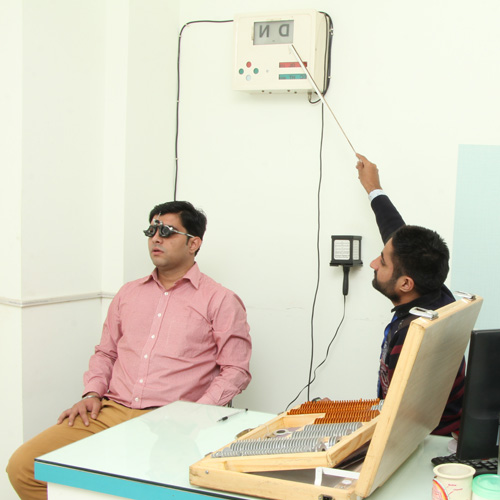
CATARACT: FAQs
It normally presents with irritation, grittiness and foreign body sensation in the eye. It is caused by a wide variety of conditions. Evaporative dry eye is commonly seen in people who typically work more than 8 hours on computer screens. Dry eye is also seen in people suffering from thyroid and joint related disorders, as well as, in people using medication for neurological disorders.
The eye functions much like a camera. Light rays enter the eye, passing through the cornea, the aqueous humor – transparent fluid in the front of the eye – and then the pupil and into the lens. The lens bends the light rays to focus objects onto the retina lining the back of the eye. From there, the image passes through the retinal cells, into the optic nerve, and finally to the back of the brain which process the images. Cataracts occur when there is a buildup of protein in the lens that makes it cloudy. This prevents light from passing clearly through the lens, causing some loss of vision.
Uveitis is characterized by inflammation of the inner coats of the eye. Patients complain of pain, redness, and diminution of vision. Uveitis is often associated with diseases that affect the rest of the body. It is commonly associated with disorders such as Rheumatoid Arthritis and Sarcoidosis. Viral infections and Tuberculosis are also associated with Uveitis.
The Optic Nerve carries electrical impulses from the eye to the brain and enables us to see. Neuro Ophthalmology is the subspecialty that deals with disorders of the optic nerve. Common disorders include optic neuritis (inflammation and swelling of the optic nerve), Ischemic Optic neuropathies (Decreased blood supply to the optic nerve) and Traumatic optic neuropathy. Diagnosis of these disorders requires electrophysiological tests such as VEP/ERG and EOG.
Low vision aids clinic offers rehabilitative services to patients with low vision in the form of various optical magnifiers, telescopes and electronic low vision aids.
The Cornea is the outermost transparent layer of the eye.
Corneal blindness accounts for 0.52% of total blindness in the Indian subcontinent. The cornea can be the site of various disorders ranging from whitening of the cornea due to degenerations and dystrophies to abnormalities of corneal shape including Keratoconus. Treatment strategies for these disorders include Corneal Transplant surgery, Auto-grafting for Pterygium and Corneal Collagen Cross-linking with Riboflavin (C3R) for Keratoconus .
Glaucoma, otherwise known as Kala Motia is an eye disease in which there is an increase in pressure inside the eye. Just as some people have high blood pressure, in the same way, a glaucoma patient has high eye pressure.If the eye pressure remains high for a long time it damages the optic nerve which carries the light sense from the eye to the brain. This damage to the nerve is irreversible and leads to permanent and incurable blindness. That is why glaucoma is a dangerous disease of the eye and has been labeled as “lurking thief of vision”.
The sub-specialty that deals with diseases of the eyelids and bones surrounding the eye. It includes treatment of tumors and eye cancer of the eyelid and other structures around the eye. Correction of eyelids that are drooping (ptosis), as well as injections of Botox for cosmetic corrections, are given by ocuplasty surgeons.
Squint eye surgery is a treatment for detection & surgical correction of eye problems like squint, Strabismus & Amblyopia
About 125 million people around the world wear contact lenses as an alternative to glasses for the correction of refractive errors (spectacle numbers). Shroff Eye Centre and its dedicated staff offer you various contact lenses options including Soft contact lenses (including disposable), Toric contact lenses, Cosmetic contact lenses, Rigid Gas-permeable (semi-soft) contact lenses.
For Opthalmology at Shroff Eye Centre, we have a dedicated team of eye specialists committed to providing you with the best possible care, to protect your vision from diabetic retinopathy. For a routine but comprehensive eye test, make an appointment with one of our eye specialist for your eyesight test. Every patient at Shroff Eye Centre is routinely tested for visual acuity (testing of the eyesight) using Retina Scanner and eye pressure is measured to screen for glaucoma.

